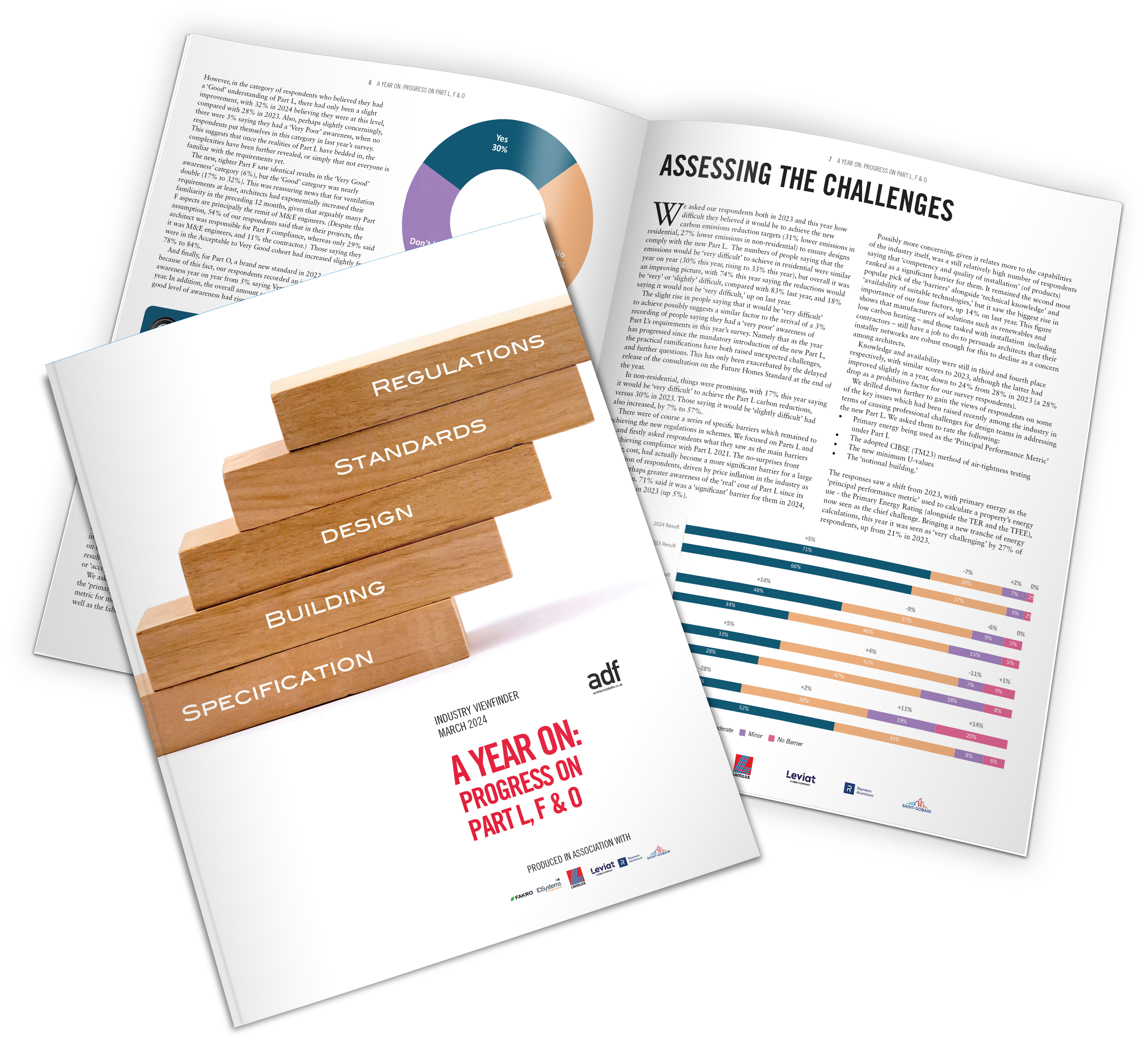The progress from Parts L, F and O. A whitepaper, one year on.
In June 2023, the new Building Regulations Parts L and F (covering energy efficiency and ventilation respectively), as well as a new Regulation mitigating consequent overheating in residential projects (Part O), were introduced as mandatory requirements. The industry was given a year’s run up to this deadline, as although the Regulations were introduced in June 2022, schemes which had submitted planning by that stage didn’t need to adhere to the new, more stringent requirements for built fabric and efficiency generally.
There are a host of challenges for designers and contractors in order to bring mainstream house designs up to this kind of level of performance, not least the ways to adopt energy efficiency designs which do not drastically change their appearance for customers. One potential outcome, for example, could be smaller or fewer windows in order to increase energy efficiency while reducing overheating.
As the industry confronted the June 2023 deadline for the tighter standards becoming mandatory (alongside the new Part O), we surveyed architects to test their perceptions, largely focusing on new build issues. We discovered a wide range of responses from these practitioners, the majority of whom were involved in new housing developments. Some were potentially expected, however others were less so.
We wanted to find out their understanding of, as well as opinions on, the new changes, their views on how relevant they are to architects, and the design approaches they are already taking to meet the new Parts L, F and O. We not only looked at their attitudes towards the challenges and bene ts of solutions for new homes, but also for the non-domestic sector.
Click here to download the full white paper.
[edit] Related articles on Designing Buildings
- Approved documents.
- Approved document o.
- Approved inspector.
- Building control bodies.
- Building Regulations exemptions.
- Building Regulations.
- Changes to approved document L and F and new approved document O.
- Competent person schemes.
- Overheating.
- Overheating guidance for buildings.
- Statutory approvals.
- Statutory authorities.
- The Building Act.
Featured articles and news
Homes England supports Greencore Homes
42 new build affordable sustainable homes in Oxfordshire.
Zero carbon social housing: unlocking brownfield potential
Seven ZEDpod strategies for brownfield housing success.
CIOB report; a blueprint for SDGs and the built environment
Pairing the Sustainable Development Goals with projects.
Types, tests, standards and fires relating to external cladding
Brief descriptions with an extensive list of fires for review.
Latest Build UK Building Safety Regime explainer published
Key elements in one short, now updated document.
UKGBC launch the UK Climate Resilience Roadmap
First guidance of its kind on direct climate impacts for the built environment and how it can adapt.
CLC Health, Safety and Wellbeing Strategy 2025
Launched by the Minister for Industry to look at fatalities on site, improving mental health and other issues.
One of the most impressive Victorian architects. Book review.
Common Assessment Standard now with building safety
New CAS update now includes mandatory building safety questions.
RTPI leader to become new CIOB Chief Executive Officer
Dr Victoria Hills MRTPI, FICE to take over after Caroline Gumble’s departure.
Social and affordable housing, a long term plan for delivery
The “Delivering a Decade of Renewal for Social and Affordable Housing” strategy sets out future path.
A change to adoptive architecture
Effects of global weather warming on architectural detailing, material choice and human interaction.
The proposed publicly owned and backed subsidiary of Homes England, to facilitate new homes.
How big is the problem and what can we do to mitigate the effects?
Overheating guidance and tools for building designers
A number of cool guides to help with the heat.
The UK's Modern Industrial Strategy: A 10 year plan
Previous consultation criticism, current key elements and general support with some persisting reservations.
Building Safety Regulator reforms
New roles, new staff and a new fast track service pave the way for a single construction regulator.
























